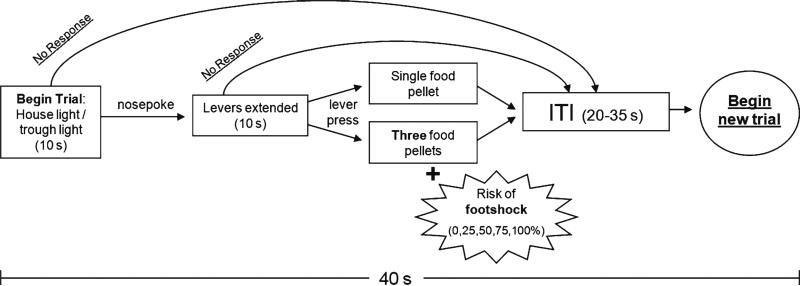Fig. 1.
Schematic of the risky decision-making task. Each trial begins with simultaneous illumination of the house light and trough light, which lasts for 10 s or until the rat performs a nose poke into the food trough. Following the nose poke, either one (forced choice trials) or both (choice trials) levers are extended, and this extension lasts for 10 s or until the rat presses a lever. Selection of one lever (the “safe” lever) causes delivery of a single food pellet, and selection of the other (the “risky” lever) causes delivery of three food pellets. However, the reward following choice of the risky lever is accompanied by the possibility of a 1-s footshock, the probability of which increases throughout the session (0, 25, 50, 75, and 100%). Following an ITI period, the next trial is initiated. Each trial (light cue, lever extension, reward/punishment, ITI) lasts 40 s.

